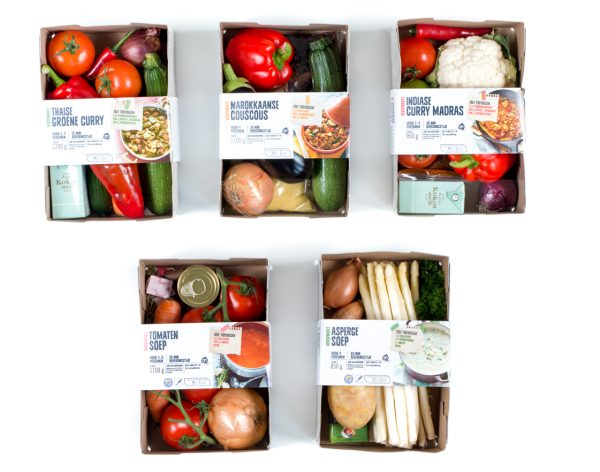More often customers and suppliers are working together to achieve innovation throughout the chain. In food, too, we see retailers and food producers increasingly cooperate with their suppliers of products, ingredients, packaging, machines or agricultural production tools.
Together you are stronger
It’s obvious, together you can do and know more than alone. An important starting point for co-innovation in food is that both parties put their knowledge and expertise on the table. From this shared knowledge base and trust, steps can be taken towards innovation. Often faster, more (cost) efficient, more multidisciplinary and groundbreaking. The initiative for co-innovation in food can come from both customers and suppliers.
Successful co-innovation case Albert Heijn Fresh box
An example of a highly successful co-innovation in food effort was the Freshbox of Albert Heijn that was co-created by the retailer and vegetable supplier Bakker Barendrecht. Food By Design facilitated this innovation journey as an independent and objective third party. Via a structured yet highly inspirational approach we created the new fresh box, that nowadays is adopted by more than 1/3 of Dutch households and can be called one of the most successful food innovations of the last decade. Read more about the Freshbox case here.

Example of co-innovation trajectory with highly successful outcome
But how do you organize such a joint innovation effort?
Whether you want to start such a joint effort as a supplier or customer, it will ask for a well structured plan and innovation trajectory, in which the intentions, expectations, starting points, steps and efforts are clear to both parties beforehand. These 4 points are essential:
- Formulate a strategic scope; In which playing field do you want to innovate together with strategic partners. Is it about product innovation, process innovation or a specific technology?
- Decide on your innovation partners; With which parties do you want to share knowledge and work together in terms of opportunity areas but also in terms of culture?
- Define the common goal; What is the common goal you want to achieve with both parties? And how do the underlying goals relate to each other.
- Set up the joint innovation pathway; How do you bundle knowledge, come up with truly innovative ideas and concepts and take the next steps to realization?
Independent facilitator
Food By Design has facilitated many of these co-innovation in food processes as an independent third party in recent years. Corona taught us new ways of remote working and revealed the surprising effectiveness of digital environments with online whiteboards where participants from around the world can stick their ideas. Read more about on our blog about remote workshops. Besides the step-by-step approach, the atmosphere of the group is an important factor. After all, two different corporate cultures come together in such a project. Trust, optimism, openness and safety are important emotional elements to take care of.
Well designed co-innovation trajectory
As with any other innovation process, a carefully designed process for co-innovation in food is important. First of all, knowledge must be shared, and additional inspiration brought in. Of great importance are the wishes and needs of the end user, the consumer. Knowing how the way of buying, preparing, eating and experiencing food is changing is important for all players in the food chain. Therefore, we start many food co-innovation projects with an inspiring food trend presentation or joint consumer research.
Doing business with customers is not only selling products.It’s about sharing knowledge, creating products together and making each other stronger.Embarking on a co-innovation journey with Food by Design led to more insights, a better understanding and a stronger relationship with our customers.
Kris DierckxGlobal Category Leader bread improvers and mixes, Zeelandia
Creating joint value together
Divergent and convergent thinking then alternate, milestones should be set for joint decisions about which opportunities and ideas will be selected for further elaboration in the next phases. At the end of such an innovation trajectory, clear agreements need to be made about who will work out which part and how revenues, rights and risks will be distributed. Confidentiality and exclusivity are important aspects of this type of agreement too. But the most important thing is to ultimately generate new value for both parties with innovative findings.
Curious how you can innovate with clients or suppliers?
Are you curious how you can co-innovate with your suppliers or customers? Then, please feel free to contact us and we will explain what possibilities we see for you.

